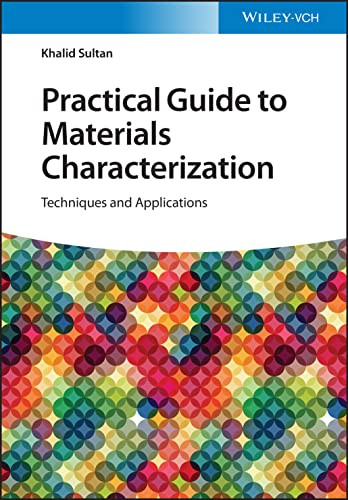

Most ebook files are in PDF format, so you can easily read them using various software such as Foxit Reader or directly on the Google Chrome browser.
Some ebook files are released by publishers in other formats such as .awz, .mobi, .epub, .fb2, etc. You may need to install specific software to read these formats on mobile/PC, such as Calibre.
Please read the tutorial at this link: https://ebookbell.com/faq
We offer FREE conversion to the popular formats you request; however, this may take some time. Therefore, right after payment, please email us, and we will try to provide the service as quickly as possible.
For some exceptional file formats or broken links (if any), please refrain from opening any disputes. Instead, email us first, and we will try to assist within a maximum of 6 hours.
EbookBell Team

4.4
62 reviewsPractice-oriented resource providing a hands-on overview of the most relevant materials characterization techniques in chemistry, physics, engineering, and more
Practical Guide to Materials Characterizationfocuses on the most widely used experimental approaches for structural, morphological, and spectroscopic characterization of materials, providing background, insights on the correct usage of the respective techniques, and the interpretation of the results. With a focus on practical applications, the work illustrates what to use and when, including real-life examples showing which characterization techniques are best suited for particular purposes. Furthermore, the work covers the practical elements of the analytical techniques used to characterize a wide range of functional materials (both in bulk as well as thin film form) in a simple but thorough manner. To aid in reader comprehension,Practical Guide to Materials Characterizationis divided into eight distinct chapters. To set the stage, the first chapter of the book reviews the fundamentals of materials characterization that are necessary to understand and use the methods presented in the ensuing chapters. Among the techniques covered are X-ray diffraction, Raman spectroscopy, X-ray spectroscopy, electron microscopies, magnetic measurement techniques, infrared spectroscopy, and dielectric measurements. Specific sample topics covered in the remaining seven chapters include: With comprehensive and in-depth coverage of the subject,Practical Guide to Materials Characterizationis a key resource for practicing professionals who wish to better understand key concepts in the field and seamlessly harness them in a myriad of applications across many different industries.